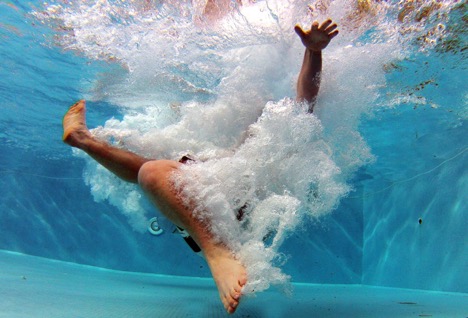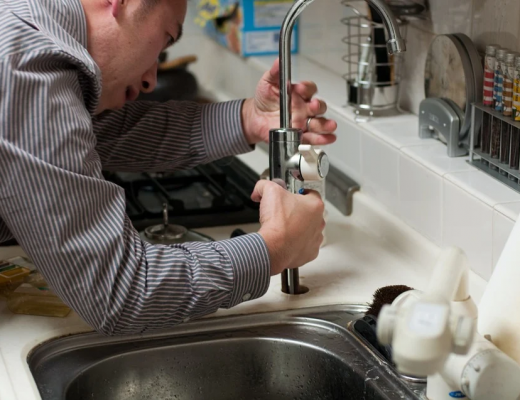The sun is shining, the temperature is soaring, and the siren call of the pool beckons us all. There’s no denying the allure of a refreshing dip on a hot summer’s day. But amidst the laughter and splashes, it’s crucial to remember that safety should always take center stage.
Each year, countless accidents and injuries occur around swimming pools, many of which are entirely preventable. In this blog post, we’ll dive into the essential tips and guidelines to help you and your loved ones stay safe by the pool.
From water awareness to poolside precautions, we’ll equip you with the knowledge you need to make your poolside oasis a true haven of relaxation and fun. Let’s get started.
Supervision and Lifeguard Awareness
One of the most critical aspects of preventing accidents and injuries at the pool is maintaining constant supervision and being aware of the lifeguard’s presence.
For children and inexperienced swimmers, adult supervision is paramount. Designate a responsible adult who can actively watch over swimmers, especially when the pool is crowded or during social gatherings.
Even in pools with lifeguards on duty, it’s crucial to remember that they can’t watch every swimmer simultaneously.
Additionally, ensure you have a legal expert to handle accident liability concerns and insurance matters related to the pool area. For instance, a personal injury lawyer with experience in premises liability and aquatic safety can provide valuable guidance in establishing proper safety protocols.
They can also aid in assessing potential risks and preparing for any legal challenges that may arise in the event of accidents or injuries.
Establish Pool Rules and Safety Guidelines
Creating and clearly communicating pool rules and safety guidelines is a fundamental step in accident prevention. Post visible signs outlining rules such as “No running,” “No diving in shallow areas,” and “No rough play.”
These rules should be straightforward and easy to understand, catering to all age groups. Additionally, ensure that everyone using the pool is aware of these guidelines, especially new visitors.
Consistently enforcing these rules helps establish a safe and respectful pool environment. Regular reminders, especially to children, about the importance of adhering to these rules can significantly reduce the risk of accidents, creating a safer and more enjoyable pool experience for all.
Ensure the Pool Has Safe and Secure Pool Equipment
A crucial aspect of pool safety is maintaining well-maintained and secure pool equipment. Life jackets and floatation devices should be readily available and appropriately sized for all swimmers, especially non-swimmers and children.
Regularly inspect diving boards and slides for any signs of damage or wear and tear, ensuring they meet safety standards. Ensure the pool is equipped with safety essentials like reaching poles and safety rings, which can be vital in rescue situations.
Adequate fencing and gates around the pool area with self-closing mechanisms are essential to prevent unsupervised access, particularly for homes with small children or pets. Regular maintenance and safety checks of all equipment contribute to a safer pool environment.
Swim Lessons and Skill Development
Investing in swim lessons and fostering skill development is a proactive strategy to prevent accidents at the pool. Enroll individuals, especially children, in swim lessons tailored to their age and skill level.
These lessons not only teach essential swimming techniques but also instill water confidence, overcoming personal fears, and safety awareness.
Encourage regular practice and exposure to different aquatic environments to build competence. It’s crucial to recognize that swimming proficiency varies, so always gauge one’s comfort level in the water.
By offering opportunities for skill enhancement and ensuring everyone possesses at least basic swimming abilities, you significantly reduce the risk of accidents and promote a safer pool experience for all participants.
Stay Hydrated Around the Pool
Amidst the fun and sun, it’s easy to overlook the importance of staying hydrated while at the pool. The combination of physical activity and exposure to the sun can lead to dehydration, which can cause fatigue and heat-related illnesses.
Encourage pool-goers to drink plenty of water throughout their time at the pool, especially in hot weather. Have water bottles readily available and remind swimmers to take regular breaks to rehydrate.
Additionally, provide shaded areas where people can take refuge from the sun’s intense rays. Proper hydration and sun protection measures like sunscreen and hats are vital in ensuring a safe and enjoyable pool experience while minimizing the risk of heat-related issues.
Avoid Slip and Fall Accidents
The pool deck can become slippery due to water splashes and wet feet, increasing the risk of slip and fall accidents. To prevent such incidents, it’s essential to keep the pool deck dry and clear of hazards. Regularly mop up any standing water and promptly clean up spills.
Encourage pool-goers to use designated non-slip footwear, as bare feet can be especially prone to slipping. Place slip-resistant mats in high-traffic areas, like near the pool entrance and exits.
Additionally, make sure that all pool equipment, such as ladders and handrails, is in good repair, as damaged equipment can contribute to accidents. Proper maintenance and vigilant attention to the pool deck’s condition are key to preventing slip and fall accidents.
Emergency Response Preparedness
Being prepared for pool-related emergencies is paramount to ensuring the safety of all pool users. Ensure that individuals responsible for supervising the pool area have received CPR and first aid training.
Have a well-stocked first aid kit and an automated external defibrillator (AED) readily accessible. Clearly post emergency contact numbers and pool rules related to emergencies.
Designate an evacuation plan and assembly point in case of severe weather or other emergencies.
Regularly conduct emergency drills, so both staff and visitors are familiar with the procedures. By having a comprehensive emergency response plan in place and practicing it regularly, you can minimize the impact of accidents and swiftly respond to any unforeseen situations, potentially saving lives.
Creating a safe pool environment is a shared responsibility that involves careful planning and proactive measures.
From vigilant supervision and enforcing rules to promoting swimming proficiency and having emergency response plans in place, these essential tips are key to preventing accidents and injuries at the pool.
By fostering a culture of safety and awareness, we can ensure that the pool remains a place of enjoyment and relaxation for everyone while minimizing the risks associated with water activities. Remember, prevention is the best strategy when it comes to pool safety.





No Comments